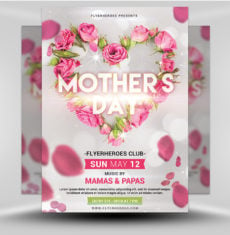New and blue. Perfect for a waterfront property or a new listing that you want to create a clean and fresh feel for.
The blue and white theme keeps this new listing flyer template clean and all primary information including headline, primary image, property description, and realtor contact info is prominently displayed front and center.
Secondary elements such as your logo, supplementary images, and address are carefully placed to the right providing the reader with a complete image of the property without taking away from the key info.
Download this new listing real estate flyer template today and use it to create a clean and fresh appeal for your next property listing.
Fonts Required
General Information:
This flyer template is a premium Photoshop PSD flyer/poster template designed by FlyerHeroes to be used with Photoshop CS4 and higher.
Once you have purchased this flyer template, you are free to make any customizations and modifications you’d like.
You are also granted unlimited use and a 100% royalty-free license, meaning you can use this product as many times as you wish. You are free to use this product in both personal and commercial work.
You can read more about our file licenses here and our file requirements here.
If you have any further questions, please feel free to direct your questions to FlyerHeroes Support.

















